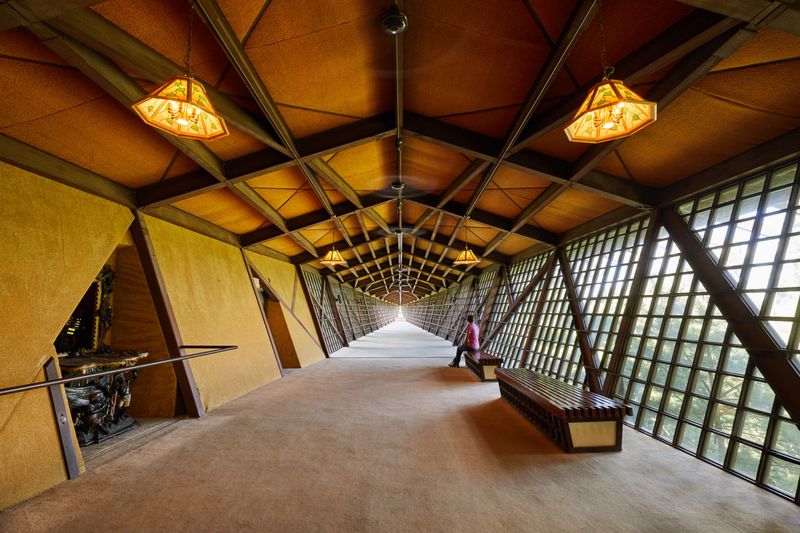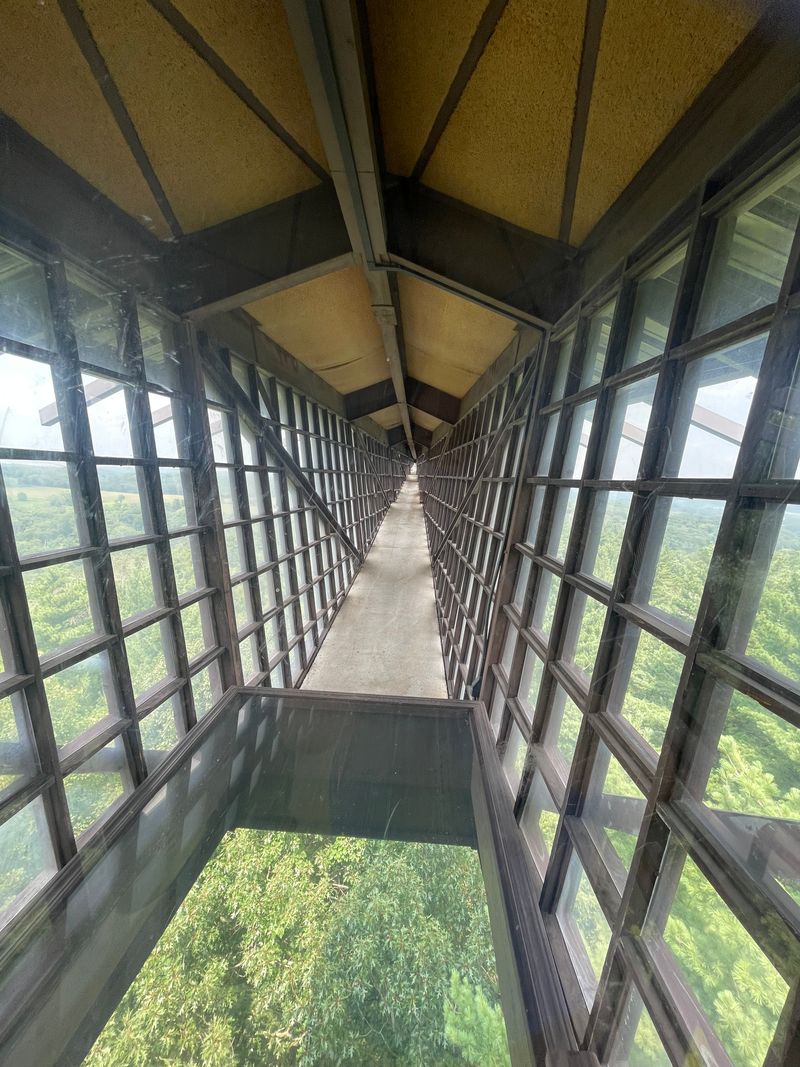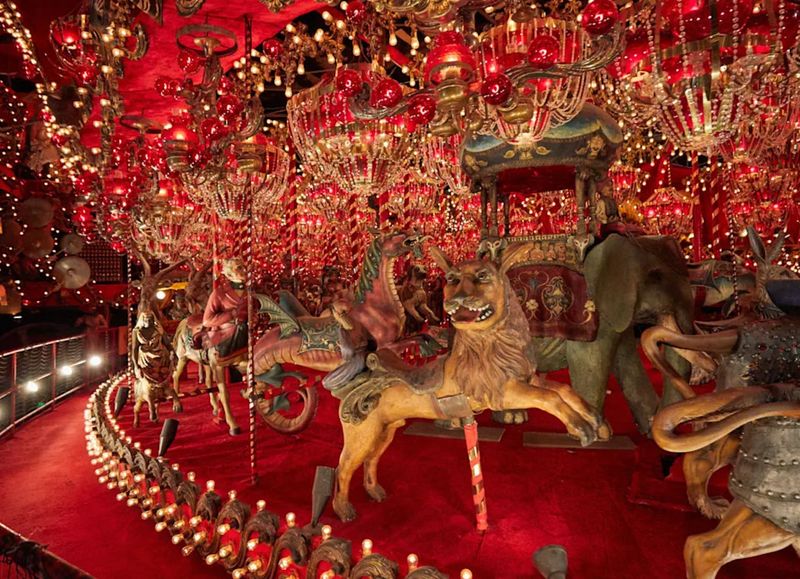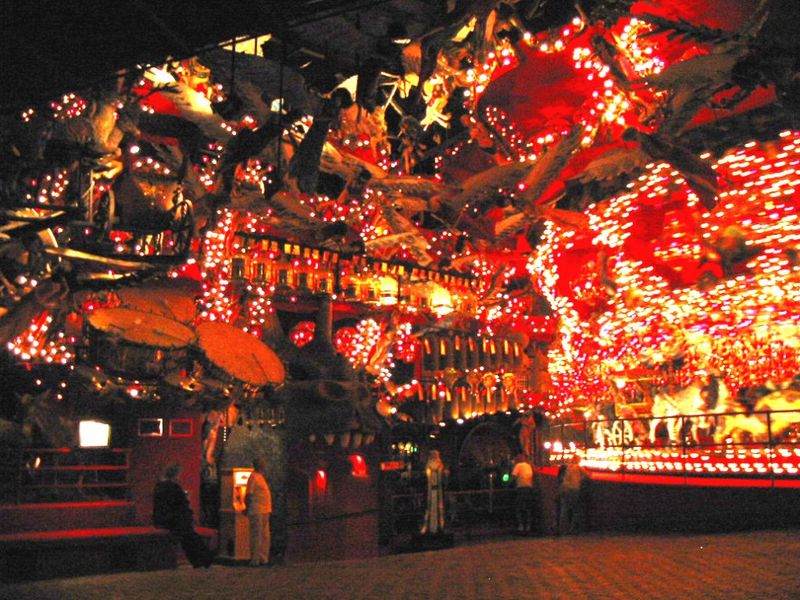Perched high above the quiet town of Spring Green, Wisconsin, sits one of America’s most baffling attractions. The House on the Rock began as a simple retreat but evolved into a maze of bizarre rooms, impossible structures, and endless collections that defy explanation. What architect Alex Jordan Jr. created isn’t just a building—it’s an experience that blurs the line between museum, funhouse, and fever dream. Visitors leave scratching their heads, wondering what they just witnessed and why they can’t stop talking about it.
A Vision That Spiraled Out of Control
Back in 1945, Alex Jordan Jr. set out to build a quiet retreat in the hills—a personal escape where he could think and create. What started as a modest “musing place” quickly morphed into something far stranger. By the 1960s, the property had exploded into a sprawling labyrinth of towers, catwalks, and oddly shaped rooms.
Jordan couldn’t seem to stop building. Each addition brought new challenges and opportunities for architectural experimentation. The compound grew organically, without a master plan, creating a maze that feels both intentional and accidental.
Today, the site covers acres of hillside, with structures jutting out at impossible angles. What began as one man’s private sanctuary became a public spectacle that attracts curious visitors from around the world, all eager to explore Jordan’s ever-expanding vision.
The Infinity Room’s Engineering Marvel
Imagine walking on a bridge that stretches 218 feet into thin air with absolutely nothing holding it up from below. The Infinity Room does exactly that, cantilevering out over the valley using 1,500 tons of steel cleverly hidden within glass and wood. It’s an engineering feat that seems to mock gravity itself.
Jordan designed it to make visitors feel like they’re balanced on a tree limb, suspended between earth and sky. The sensation is both thrilling and unnerving. Windows line both sides, offering panoramic views that amplify the feeling of floating.
Walking to the end requires a certain amount of courage—or denial. The floor doesn’t shake, but your nerves might. This single room has become the attraction’s most famous feature, a testament to Jordan’s willingness to push architectural boundaries to their absolute limits.
Collections Beyond Comprehension
Step inside and prepare for sensory overload. Jordan subscribed to the philosophy that “more is more,” and the collections prove it. There’s a room dedicated entirely to L-shaped chairs—dozens of them arranged in rows. Another space features a massive sea dragon replica stretching over 100 feet long.
Automated musical instruments fill entire halls, their mechanical workings visible behind glass. Antique weapons, carousel animals, and mysterious objects crowd every available surface. Some pieces were custom-made, others salvaged from auctions and estate sales across the country.
The lighting, mirrors, and acoustics aren’t accidental—they’re carefully orchestrated to heighten the strangeness. Visitors describe it as wandering through a carnival crossed with an art installation, where every turn reveals something unexpected, occasionally unsettling, but always memorable.
Architecture as Theatrical Experience
Forget everything you know about how buildings should work. At the House on the Rock, narrow bridges connect rooms with wildly different themes. Stairways spiral down into shadowy tunnels that lead… somewhere. Windows frame forest views like carefully composed paintings.
Jordan wasn’t interested in functional design—he wanted narrative. Each space tells a story, even if that story doesn’t make logical sense. The architecture performs for you, guiding your emotions through surprise, wonder, and occasional disorientation.
Floors shift levels unexpectedly. Ceilings soar or press down claustrophobically. The building itself becomes the main attraction, with objects serving as supporting cast. Visitors don’t just tour the House on the Rock—they experience it, emerging with stories that sound too strange to be true but absolutely are.
More Than 140,000 Annual Visitors
Every year, over 140,000 people make the pilgrimage to Spring Green to see what all the fuss is about. The House on the Rock ranks among Wisconsin’s top tourist destinations, drawing families, architecture enthusiasts, and curiosity-seekers from across the globe.
After Jordan’s death in 1989, new owners expanded the property with cafés, gift shops, and event spaces. Despite commercialization, the core experience remains intact—weird, wonderful, and impossible to categorize. Most visitors underestimate the time needed to explore properly.
Plan for at least two hours, though many spend far longer wandering the maze of rooms and levels. The sheer scale surprises people. What looks manageable from outside becomes an afternoon-consuming adventure once you’re inside, with each turn revealing another layer of Jordan’s peculiar genius.
Practical Details for Your Visit
You’ll find the House on the Rock at 5754 State Highway 23 in Spring Green, Wisconsin. Admission is required—this isn’t a free roadside attraction. Prices vary depending on which sections you choose to explore, with full-access tickets giving you the complete experience.
Wear comfortable shoes, and that’s not a casual suggestion. The floors change constantly, stairs appear without warning, and you’ll be on your feet for hours. Some passages are narrow, others dimly lit, so watch your step and mind your head.
Bring a camera, but check the rules—some areas restrict photography. Bathrooms and rest areas are scattered throughout, though not always where you’d expect them. The place can feel overwhelming, so pace yourself and don’t rush through it.
Jordan’s Singular Artistic Statement
Alex Jordan Jr. never followed rules, architectural or otherwise. His creation stands as a monument to individual vision pursued without compromise or concern for convention. Some call it genius, others call it madness—most agree it’s both.
Jordan worked without formal architectural training, relying on instinct and imagination. He designed spaces meant to provoke emotion rather than serve function. The result feels personal, like stepping inside someone’s dream—or possibly their obsession.
After his death, debates continue about his intentions and legacy. Was it art? Architecture? Entertainment? Performance? The beauty is that it’s all of those things and none of them completely. Jordan created something that resists easy categorization, and perhaps that was the point all along—to build something utterly unique.
Legacy of Wonder and Bewilderment
Decades after Jordan stopped building, his creation continues to baffle and delight in equal measure. The House on the Rock occupies a strange space in American culture—too weird to ignore, too genuine to dismiss as mere tourist trap.
It’s been featured in books, documentaries, and even Neil Gaiman’s novel “American Gods,” cementing its place in popular imagination. People who visited as children bring their own kids, eager to share the experience and watch their reactions to the impossible rooms and endless collections.
The House on the Rock proves that architecture can be destination, spectacle, and art simultaneously. It challenges assumptions about what buildings should do and how spaces should feel. Jordan’s legacy isn’t just the structure itself—it’s the sense of possibility that anything, no matter how improbable, can be built.












